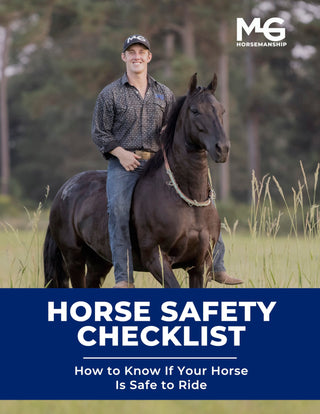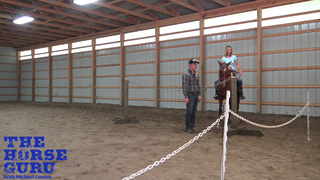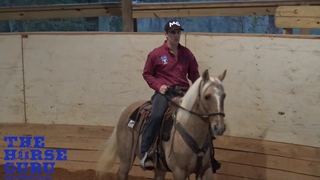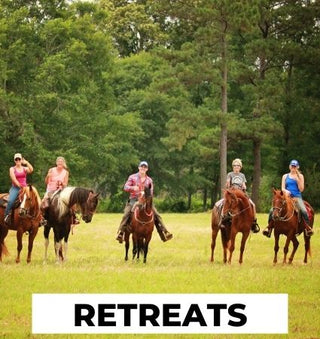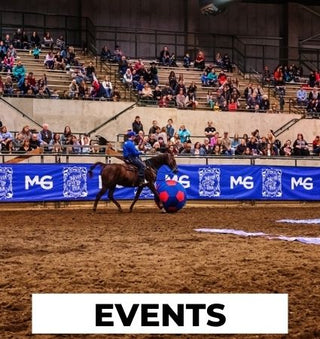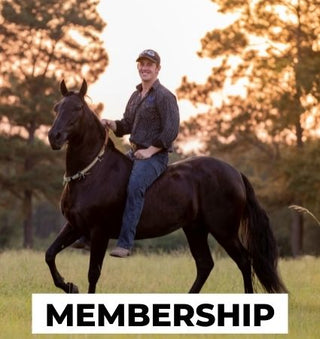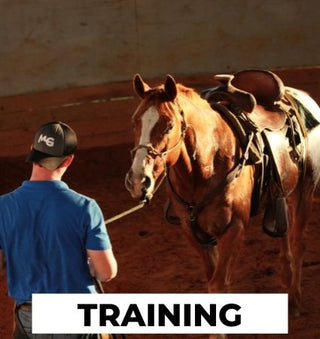Watch the Video Here or continue reading below!
So you’ve already learned how to rope from the ground and practiced your aim with a bucket—great! Now it’s time to take the next step: roping from the back of your horse. In this post, we’re diving into how to rope from horseback with confidence, safety, and the right technique.
Get the Basics Down First
Start with Rope and Rein Management
Before you even try to swing a rope from the saddle, make sure you've mastered the essentials:
-
Coil management: Know how to hold and control your rope without tangling.
-
Rein management: Learn to steer your horse one-handed while holding your rope.
These basics set the foundation for a smooth, safe roping experience from horseback.
Setting Up Your Swing
How to Position Your Hands and Body
To begin roping from the horse:
-
Hold your rope in your right hand, out to the side with your palm open.
-
Get a feel for your loop and start your swing with your palm facing outward.
-
Most importantly—stand up slightly in the stirrups.
This standing position mimics how you roped from the ground and gives you better balance and follow-through.
Why You Shouldn’t Sit on Your Butt
Proper Posture Makes Perfect
Here’s a key tip: don’t stay seated flat in your saddle when you rope.
-
Ropers on the ground never sit to throw, and it’s the same from the saddle.
-
Standing slightly helps your loop travel cleanly and gives you more accuracy.
If you try to rope while sitting, you’re likely to miss—it’s that simple.
The Follow-Through
How to Release and Dally Off Safely
As your rope swings around and your loop lands over the bucket (or target), follow these steps:
-
Follow through: Let your loop pass the target.
-
Grab slack: Reach back with your right hand to pull the slack.
-
Dally off: Wrap the rope around the saddle horn with your thumb always up.
⚠️ Safety Tip: Start with a lightweight, stationary target (like a bucket) so there's no risk of getting your fingers caught when dallying off.
Roping Something in Motion
Moving from Practice to Real Action
When you’re ready to rope something that moves, like a cow:
-
Make sure your horse is desensitized to the rope flinging around it.
-
When you rope, don’t slam to a stop.
-
Maintain movement, and be ready to dally off smoothly.
Place your target slightly off to the right side of your horse for optimal swing and follow-through.
Build the Muscle Memory
Daily Practice Makes Perfect
Michael Gascon’s pro tip? Practice roping that bucket 10 times every single day.
-
Spend just 5–10 minutes per session.
-
In a month, your accuracy and feel for the rope will dramatically improve.
The difference between practicing at a standstill and doing it in motion is minimal once you and your horse are moving together at the same pace.
Pro Tips for Roping from a Horse
Little Things That Make a Big Difference
✅ Keep your loop flat and level above your head.
✅ Stand up when you swing—don’t sit flat.
✅ Practice your follow-through to ensure clean loops.
✅ Start slow and build confidence before going after a live target.
Final Thoughts
From Bucket to Cow—You’ve Got This
Roping from a horse doesn’t have to be intimidating. With proper technique, regular practice, and a desensitized horse, you’ll be throwing clean loops in no time. Start with simple targets, focus on body position, and keep that thumb up when you dally.
Thanks for watching, and happy roping!



